"I treat the picture like an object. It’s not just its surface that interests me, but also its spatiality and material, which usually gets pushed to the sidelines" says Bartosz Kokosiński in the second episode of "Behind the Art" video, produced by PURO.
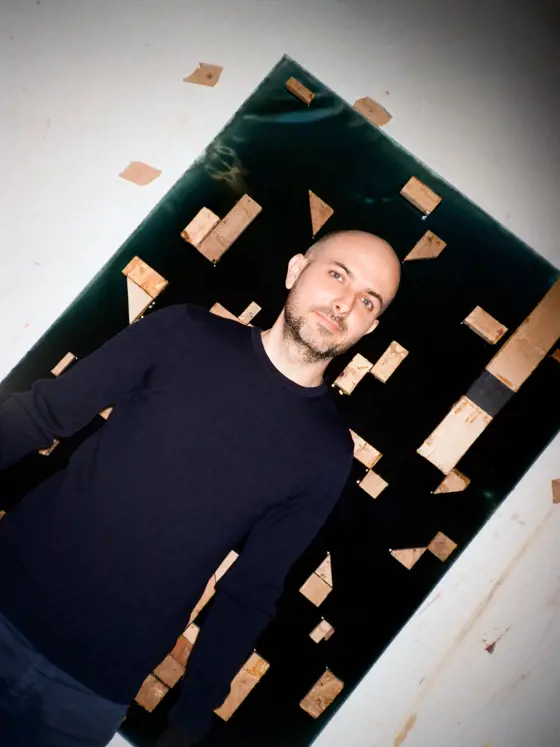
You are fascinated by the materials all around you, experimenting with various techniques. What are you working at right now?
My painting is sometimes associated with abstract art, so I’ve gone against those expectations, or perhaps have started keeping up with the times, and began to get interested in figurative art. My latest compositions incorporate photographs, panoramas, and portraits. In the video I prepared for Hotel Puro there is a picture in which I included a portrait generated by AI. I often work with the little things physically surrounding me in the studio: wood shavings, trash, parts of the studio, but also non-material things like the information I get about AI, for instance. That’s why I decided to experiment with it.
You have gone from non-figurative work to painting that represents reality.
That’s not quite true, because I’m still sticking a picture with a portrait on canvas onto the main picture. The picture still interests me more as an object than as a depiction. I’ve always had a problem with inventing and painting stories, with the narrative and illustrative part of the medium of painting. The crux of my work is the material, the object with its own memory, the passing of time and history, or the junk found in the city. I am interested in the constant transformation of matter, its change and circulation in the world.
How did it happen that you started experimenting with painting? How did it start?
While I was studying at the Academy of Fine Arts in Krakow, influenced by Professor Grzegorz Sztwiertnia, whose work often alluded to medicine, I made a series called The Sickness of Painting. On one side of the picture I painted an academic-style portrait, and on the other the same person with some kind of “ailment,” which was not painted, but arose from technological errors in the painting. In one the paint was peeling, in another the picture was “wonky,” another still had too much canvas or oil patches. That was a response to my sense of being tired with painting.
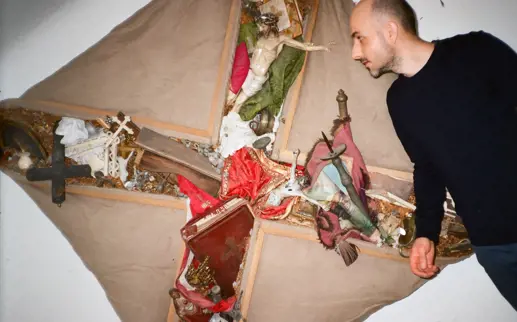
That began your process of deconstructing and destroying paintings, introducing errors. That let you show the material side of the picture, which it is an object as well. That led to your best-known series, Pictures Devouring Reality. How do you see those works all these years later?
That was my most appreciated, but also my most criticized series. I think you can feel the atmosphere around painting some ten or fifteen years ago in those works. I was recently discussing this with Marta Antoniak, a painter and a friend from the academy. We were brought up on critical art, we visited the Bunkier Sztuki in Krakow and other galleries that were full of performances, video art, and socially committed work. Back then, hard as it may be to imagine at present, painting was negated, marginalized, and considered second-class art. We felt an inner conflict between being an artist and a painter. Pictures Devouring Reality was a story about painting that wasn’t painting. I felt I should do something different from what was considered art, and not pure decoration. That came from my helplessness and questions: What to paint? How to paint? And why?
What was the reality devoured by painting? On the one hand, I see a critique of painting, of bourgeois tastes, full of deer and nature scenes, and on the other, poor materials from everyday reality.
I burned the first picture in that series. I didn’t like it, it had too many things in it. Then I began structuring my ideas. I drew from the classical genres of painting, such as landscapes, portraits, religious or military painting. I’ve gathered a collection of objects for various themes. Right now I’m still putting it together, because I enjoy collecting. The “poor” pictures, on the other hand, were outside of this series. I was interested in deformation, in the idea of the picture as an object where I put various things and then painted them monochromatically.
Where do you get the objects you put in the pictures?
In my old studio I had so many found objects that I was always stepping on them. I collected things everywhere: at flea markets or from ads on social media. I carted whole bags of things out of people’s apartments. Now I’m more organized and I collect only those objects I need. I often look for them on Allegro or OLX, but also at marketplaces. Those objects often lead to ideas for later works.
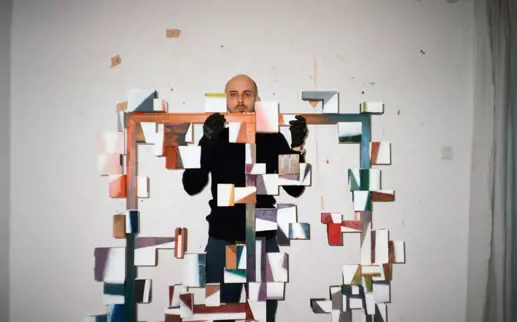
I see the influence of Kantor in your work and the painting tradition of assemblage. How far is that a conscious choice rooted in your time at the Krakow academy?
Władysław Hasior and Tadeusz Kantor are definitely important reference points in my art. I remember and visiting a big Kantor exhibition in Krakow as a child, and in high school, the Hasior Museum in Zakopane, which made a major impression on me as one big art installation. I’m sure that was right up my alley. Yet I am not one of those artists who “tackles” the classics and works on their legacy. Thinking of art in terms of projects, from the sketch to the execution, is not my style. I prefer to surrender to the material, following the process and watching where it takes me.
Nonetheless, your exhibitions feel quite coherent.
I’d compare it to handwriting. Every one has their own way of doing it, and when they write naturally, it always comes out similar.
When I look at your pictures, I think of concepts like excess and overproduction. Are they a reflection on humanity and the natural world or environmental catastrophe?
The series itself did not come from environmental concerns and is not about trash or the environment. I would more say it about an excess of things and objects. I felt overwhelmed by production, but also by my own personal objects, which need repairing, attention, and proper space. It reminded me of the family house, where everything was set aside and stored for later. That was the communist-era logic of shortages, in which not even broken things were thrown out.
Marcin Wicha had an interesting take on that in his book Things I Didn’t Throw Away.
Yes, I had a similar experience. When I began working on the pictures my first instinct was to visit my parents and sort through things in their attic.
So it was a kind of recycling?
You might say that. I make a lot of garbage and waste in the studio and later I paste it onto other pictures. I also created lesser-known works on which I glued compositions of found objects, cardboard, wood shavings, and tape. I must admit, however, that those were not adored by the gallerists and collectors. That really was trash art. Processing and using objects is important in my work. Yet it comes from the fact that I mainly see them as objects that want to tell us their stories and secrets.
I see a lot of destructive force in your work: wrecking, bending, cutting the canvas, burning works, using materials that decay. I associate these things with entropy, destruction, or more general reflections on the world and planetary catastrophe, as in your last exhibition, Black Visions, at Monopol Gallery in Warsaw.
When I opened that exhibition the pandemic was barely over, and the threat of war in Ukraine, which later broke out, was hanging in the air. The series of black pictures was tied to the sense that lots had changed recently. For the worse, unfortunately. For many years we lived with the illusion that the world was “getting better,” that we were on an endless path of progress. Ever since my studies I had had the feeling that the world, and myself along with it, would develop economically, socially, and culturally. It seemed nothing would stand in the way. Suddenly everything reversed. The pandemic and war came, and we are increasingly experiencing climate change. Black Visions was an intuitive exhibition in which I wanted to express this dark foreboding.
An important element in your work is a fire sowing destruction, charring objects and pictures. You showed one of them at a group exhibition at Pani Domu Gallery in Poznań. Does fire facinate you?
That work was created by accident. I called up a friend whose house had burned down. He himself is a collector and trader of antiques, so he had a lot of interesting objects that were destroyed. He was consoled when I came and began to notice the beauty in the charred ruins. He gingerly pulled out various pieces, telling me their stories. Some he kept for himself, others he let me take and use. Then I had a sizable collection of burnt objects, and started making works from them. That didn’t happen all at once. Sometimes I need a while to find the right form for my works.
But what’s the deal with fire?
It’s true it appears a lot as an element in my work. I burned the first Picture Devouring Reality out of rage. Fire purges and let me create new works. Now it’s appearing again. I think it was more intuition than a conscious choice. I like how uncompromising that simple gesture is.
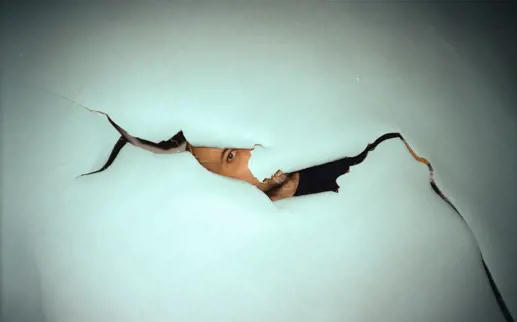
Recently you’ve begun creating an art collective. How did you get that idea?
The Inne Towarzystwo collective got its start in the casual meetings of a few artists in studios. We didn’t all know each back then. For me that was a way of tearing myself away from solitary studio work and meeting artists whom I sometimes only knew through Instagram, to build new relationships. I liked those talks among artists. Meanwhile, a space went up for rent on Puławska Street. First we did a “trial” rental, then it turned out half a year had passed since we began running a gallery there. We put on various events and group exhibitions, we also organized trips outside of Warsaw to meet new people.
Where did you get the name?
It was suggested by the painter Małgorzata Widomska. At the start I wasn’t fond of it, because it situated our group in opposition to some imaginary center, as an alternative group or a band of outsiders. During a meeting with Szymon Szewczyk in Katowice, he pointed out that the name shows our interest in other artists and our tendency to search.
Have you got any plans for the coming year?
Yes, we still want to take part in FRINGE, which showcases grassroots and collective galleries in Warsaw, as opposed to the “established” Warsaw Gallery Weekend. We’re saying goodbye to the venue on Puławska Street, but we’re planning many excursions; for instance, we’re going to put on an exhibition at the Visual Arts High School in Nałęczów.
Interview: Michalina Sablik
Video: Tala Dołęgowska
Similiar Articles
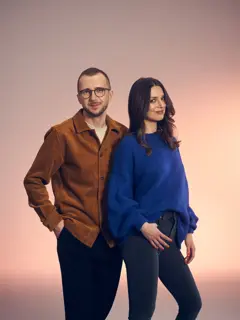
- Trend
- Poland
Coffee Spots Polska is back
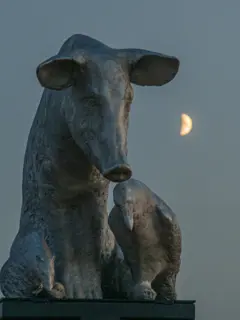
- Trend
- Poland
Exhibition: "From the Ashes" at Zachęta
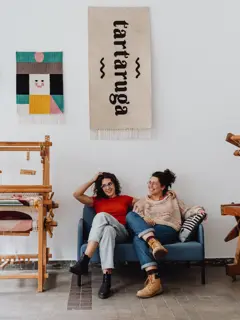
- Trend
- Poland
